Sandhill Cranes
Every winter Sandhill Cranes spend the winter in Mexico, New Mexico and Texas. In early spring they start the journey north to spend the summer nesting in Canada, Alaska, and Siberia. The most important rest stop on this migration is the big bend area on the Platte River in Nebraska. Between Feb and April 600,000 of them will stop here to feed and rest. Last weekend, Harland and I caught up with them near Grand Island. Some quick crane facts:
- They are one of the oldest bird populations on the planet. There are fossil records in Nebraska dating back 9 million years.
- They are 3-4 feet tall, weigh 6-12 pounds, have a 6 foot wingspan, and can live as long as 40 years.
- Their diet consists of snails, grubs, plant tubers, earthworms, and small rodents. While in Nebraska, they feed primarily on waste grain left in farm fields.
- They fly 25-30 miles per hour, and can make 200-300 miles per day. With a good tailwind they can fly as far as 500 miles in a day.
The Platte river provides a safe place from predators to roost at night where the cranes stand in large groups on the sandbars. In the early morning, they fly out into the fields to feed and rest returning to the river after sundown to roost for the night.
We spent Sunday afternoon driving around backroads to see the cranes feeding in the fields.
The fly from field to field feeding on waste corn.
Using our truck as a blind, I sat in the open window and rested my camera on the top of the truck cab to capture them in flight.
I marvel as they glide on their impressive 6 foot wingspan, feet and head pointed outwards.
Here, they fly over the sand hills, sand formations whipped up by winds in the last ice age.
Look how their wingtips curl up in the wind.
As evening approached, we headed to the river to watch as the cranes came in to roost for the night. In the early evening light, their forms became outlines against the velvet sky.
In the near darkness, we could just make them out as they alighted on a sandbar in the Platte.
We left them there for the night.
The next morning, we rose at 4am and headed out to a blind along the river in the predawn darkness.
~~~~~~~~~~~~~~~~~
——-> UP NEXT: Early morning on the Platte River with the Sandhill Cranes.

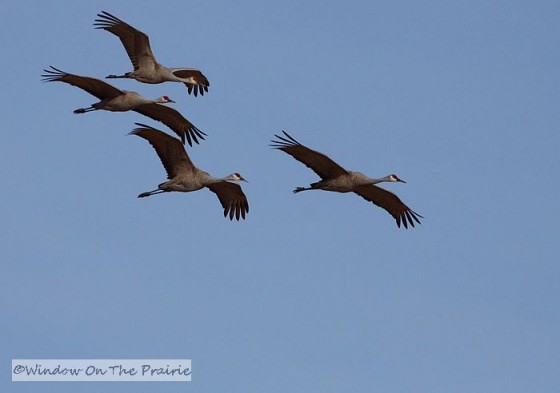
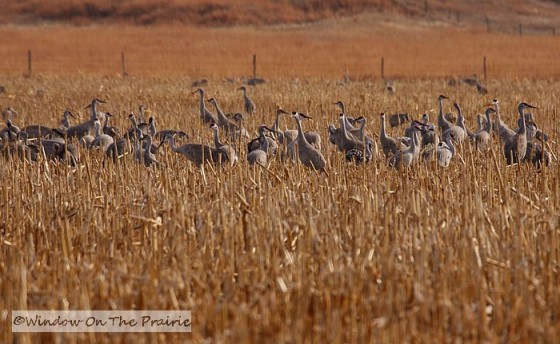
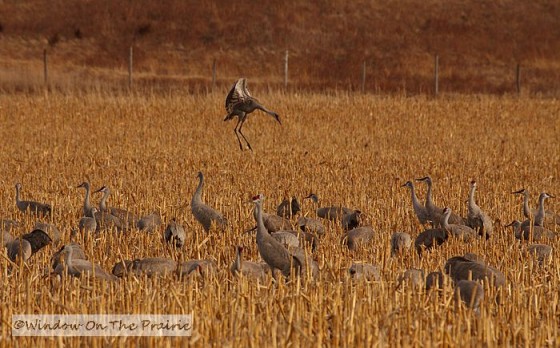
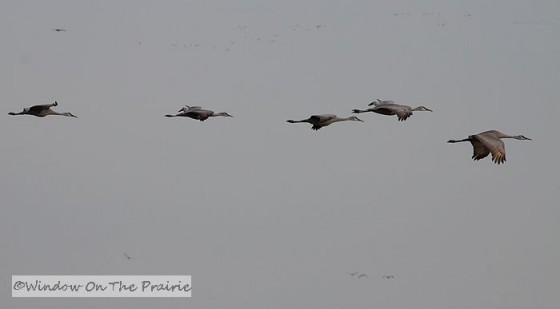
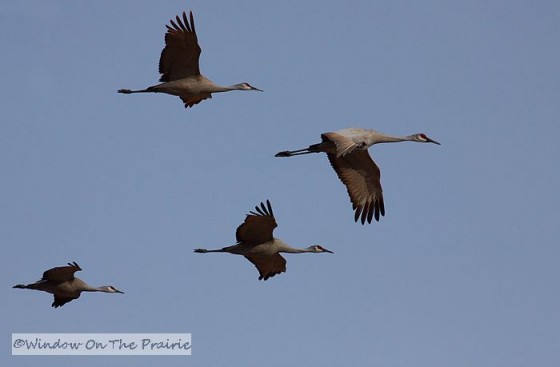
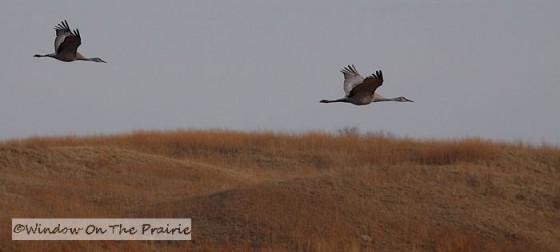
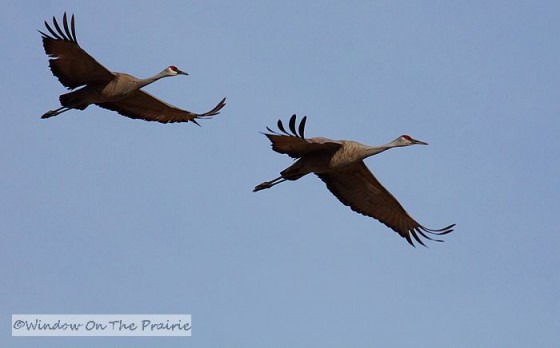
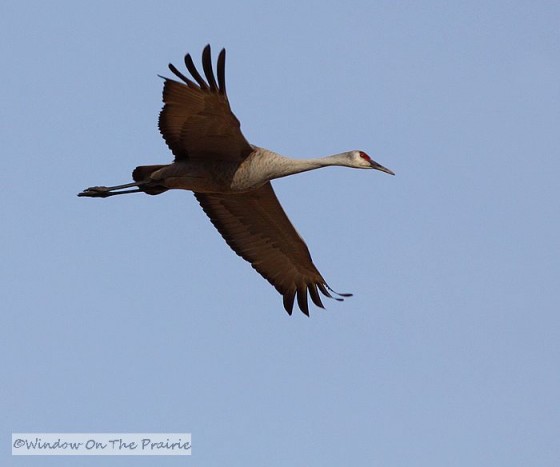
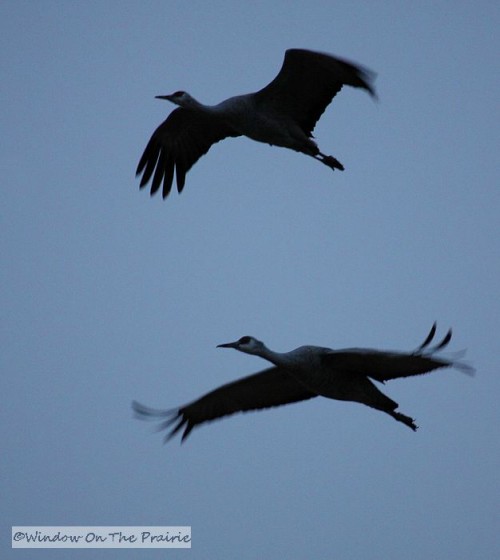
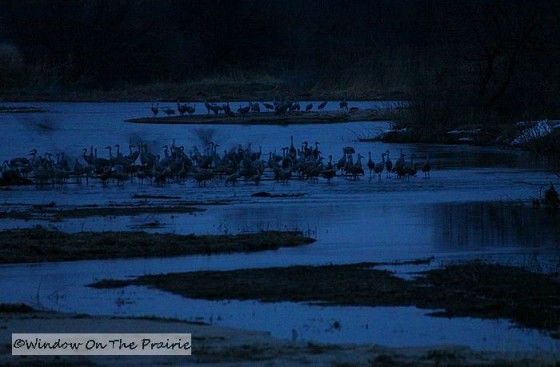
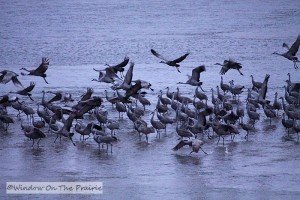
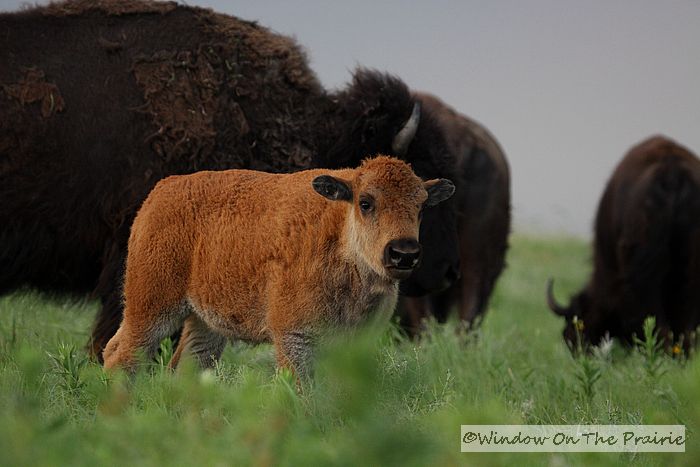
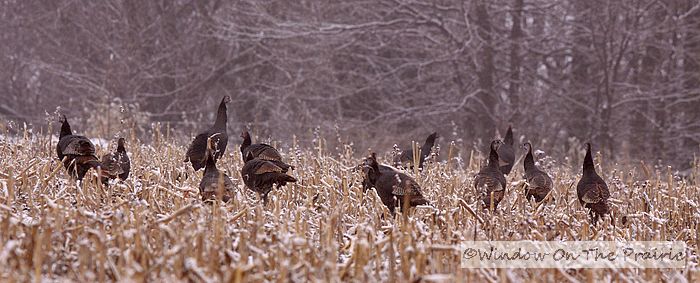
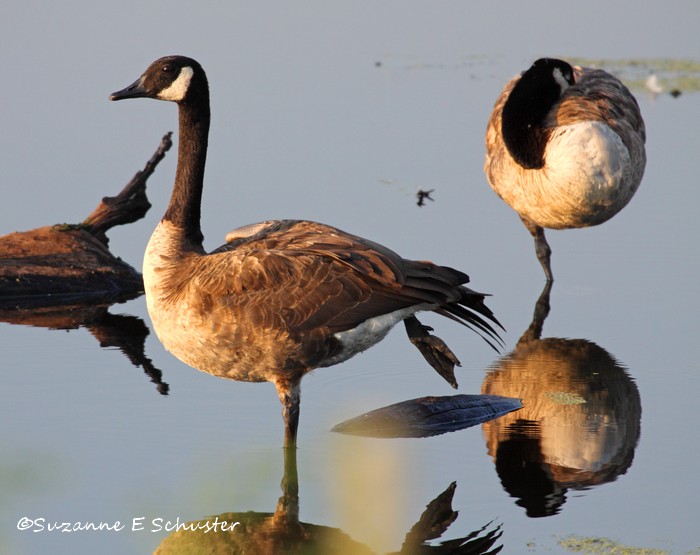
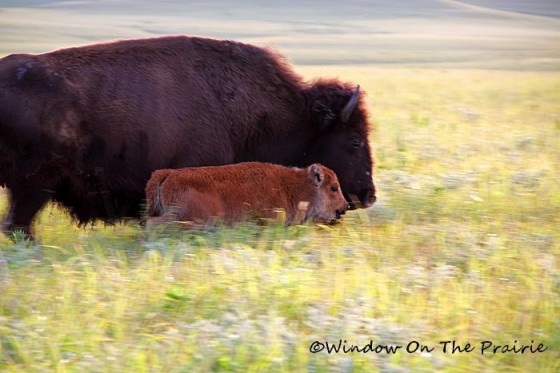
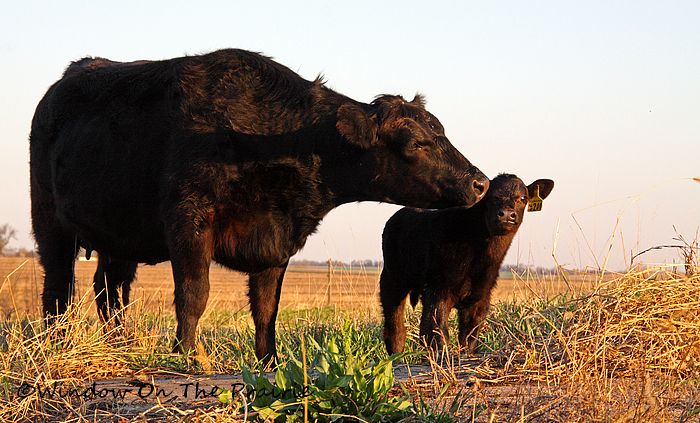







I’m so excited about seeing these pictures! Years ago, my husband and I just happened to be driving through Nebraska and stayed in Grand Island while the sandhill cranes were there. Who says Nebraska is boring?!?!
I agree Monica. Nebraska is a well kept secret. We love going up there.
Oh, what a treat you had!!! I was up to Wheeler NWF a few weeks ago and saw sandhill cranes there too, along with four whoopers. Nowhere near as many as you guys get, though. They are beautiful birds and nothing is prettier than to see a flock soaring overhead.
How lucky are you Sue. Would love to see some whooping cranes, but no luck this time out.
Oh, what a treat you had!!! I was up to Wheeler NWR a few weeks ago and saw sandhill cranes there too, along with four whoopers. Nowhere near as many as you guys get, though. They are beautiful birds and nothing is prettier than to see a flock soaring overhead.
I’m trying to edit here, so I apologize if this shows up twice!!
All the pictures are great, but that 2nd one made me laugh with that one crane coming in for a landing!
They call that parachuting Dianna. When they come in for a landing, they cup their wings, drop their feet down, and hold that positing until landing. Looks like a parachute dropping to earth.
Very interesting! They look pretty in flight.
Oh, you lucky, lucky lady! 🙂 Great pictures Suzanne… I can’t wait to see more.
BTW, I think a petition is a great idea. 🙂
We have seen a few thousand at Jasper-Pulaski Wildlife Area in Indiana, a stopping place for the Cranes on their fall migration. But 600,000, WOW! Would really like to see that.
Thanks for this post. I love seeing these guys fly over and have seen flocks in the fields here(Michigan). Big flocks but, certainly not 600,000. Thanks for the facts also, very interesting.
Some of those Sandhill Cranes must get seperated from their group and decide to stay in Florida. I have seen a few here and there on my drive to work lately. I took a picture a while back (2 years ago) of about 25 in the field next to my house. Boy were they loud!!! The baby ones are adorable, a couple had twins last spring in the field next to my work. I got a shot with a coolpix purse camera. haha
That may be a different species of Sandhill, Lisa. There is a non-migrating variety that lives in Florida.
Thanks for the insight Suzanne, I’m always learning stuff from you! Love it!!
What amazing photos! That must have been wonderful to see all of them. I can’t believe there are fossils that go back 9 million years…that’s amazing!! You know, it’s really hard to wrap my head around the idea of 9 million years!!!
Those pictures are amazing!